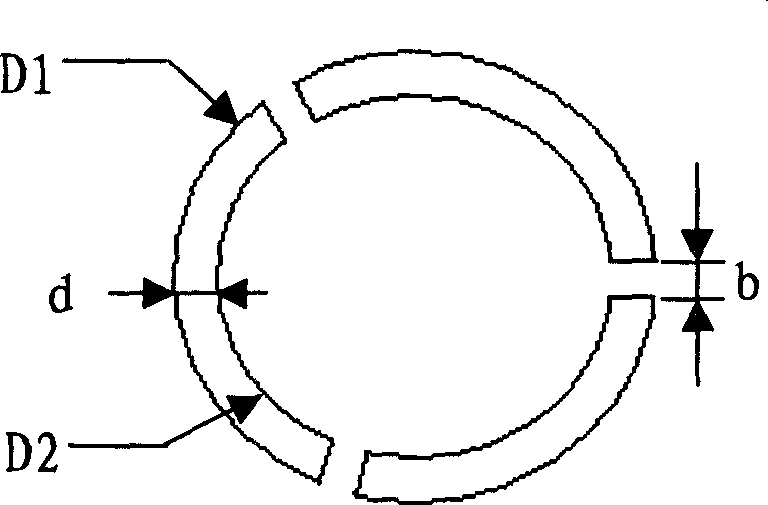Dacron thin-denier high-hollow short fiber and its production method
A production method and staple fiber technology, applied in the field of polyester fine denier high hollow staple fiber and its production, can solve the problems of poor hollowness maintenance and uniformity, deviation of cooling position, loss of thermal insulation performance, etc., to improve spinnability, Improved processability and ease of napping
- Summary
- Abstract
- Description
- Claims
- Application Information
AI Technical Summary
Problems solved by technology
Method used
Image
Examples
Embodiment Construction
[0024] figure 1 It is a schematic diagram of the three-segment arc slit nozzle. The hollow fiber is produced by adopting the three-segment arc slit nozzle structure. If the hollowness is large, the solid inner diameter of the hole must be large; while the fineness of the finished product is small, the outer diameter must be small, that is, the gap between the inner and outer holes should be small. Under the same pore conditions, with the expansion of the inner diameter, the surface area of the pores will inevitably increase, so it is necessary to achieve a reasonable distribution of the stretching ratio of the nozzle and the total stretching ratio of the post-spinning. Based on these two principles, it is most reasonable to achieve a product with a finished fineness of 1.56 to 1.67 dtex while maintaining a high and medium hollowness. The parameters of the nozzle of the present invention are:
[0025] The size of the outer circle DI of the hole is: φ0.6±0.01mm
[0026] The ...
PUM
| Property | Measurement | Unit |
|---|---|---|
| length | aaaaa | aaaaa |
| length | aaaaa | aaaaa |
| length | aaaaa | aaaaa |
Abstract
Description
Claims
Application Information
 Login to View More
Login to View More - R&D
- Intellectual Property
- Life Sciences
- Materials
- Tech Scout
- Unparalleled Data Quality
- Higher Quality Content
- 60% Fewer Hallucinations
Browse by: Latest US Patents, China's latest patents, Technical Efficacy Thesaurus, Application Domain, Technology Topic, Popular Technical Reports.
© 2025 PatSnap. All rights reserved.Legal|Privacy policy|Modern Slavery Act Transparency Statement|Sitemap|About US| Contact US: help@patsnap.com



